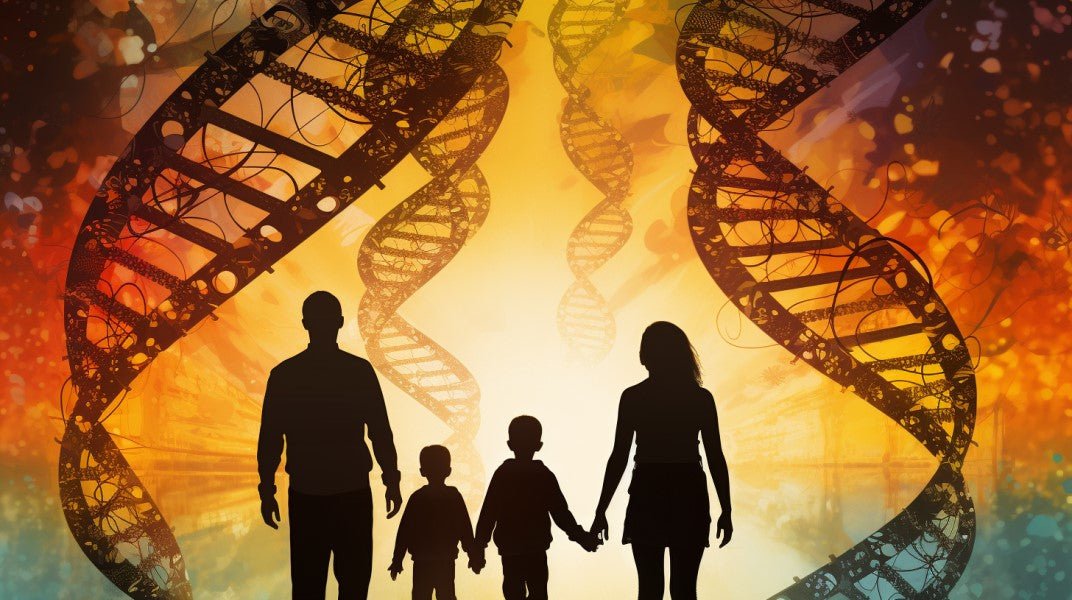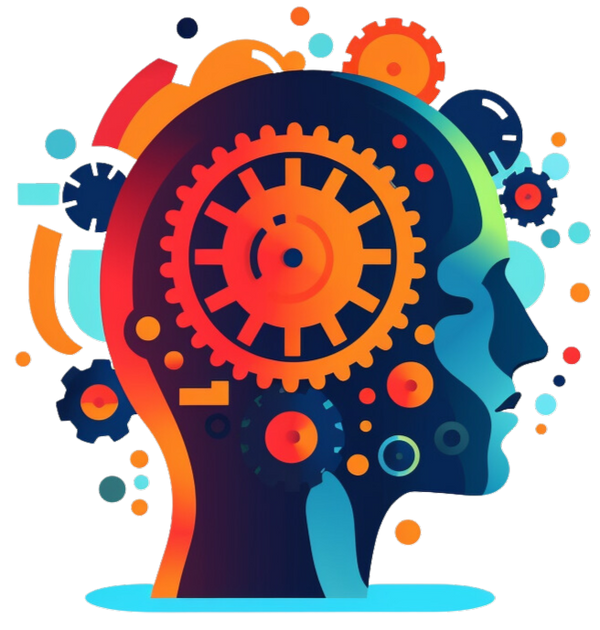
ADHD: Symptoms, treatment and progression
Share
Can you imagine what it's like when your mind constantly jumps from one thing to the next due to an attention deficit disorder? If you have trouble concentrating on a single task—and exhibit extreme impulsiveness and marked hyperactivity (or inner nervousness), you could be suffering from attention-deficit/hyperactivity disorder (ADHD). ADHD is the most common neurodevelopmental disorder in children—but that doesn't mean that one in three children has it. In fact, about 5% of children are diagnosed with ADHD . Or not—and only learn about it in adolescence or adulthood.
ADHD is rarely outgrowable, as psychology once believed. Instead, those affected learn to adapt strongly to their environment – which often results in depression and burnout. The ADHD brain demonstrably "ticks" differently .

Symptoms and signs of ADHD
The symptoms of ADHD include inattention, impulsivity, and hyperactivity. People with this mental disorder often have difficulty staying focused on a single task for long, have a poor sense of time, and sometimes struggle to organize their daily routine. Especially in children and adolescents , high levels of irritability or aggression can also be clearly evident in social interactions.
This can lead to problems at school or in the family, which also means increased stress for parents compared to neurotypical children.
Very important: Not all children and adolescents with high activity or impulsiveness have ADHD. There are many children and adolescents who are very active and express their emotions very openly. This is healthy, enjoyable, and enriching for others. It only becomes critical—and time for further evaluation—when the children and their school and family environments are clearly suffering, and healthy development in a social context is also jeopardized by the behavior.
Overall, there are various, clearly recognizable signs of ADHD in affected children . It is therefore important that a professional diagnosis be made after a discussion about suspected ADHD. Treatment, often with Ritalin or amphetamine-based medications, should only be undertaken if ADHD is actually present. And even then, depending on the severity, other options are available. Physically active children, in particular, can significantly alleviate many of their ADHD symptoms through sports, for example .

Causes and risk factors of ADHD
ADHD has various causes and risk factors . Genetic factors play an important role. Today, it is known that ADHD runs in families. Identical twins are both affected by ADHD in approximately 60-80% of cases, while fraternal twins only have ADHD in approximately 35% of cases. First-degree relatives (father, mother, children) have a three- to five-fold increased likelihood of also suffering from ADHD.
Early childhood brain damage or environmental factors can also increase the risk of ADHD in children. If a child experiences brain damage during development, for example, due to a lack of oxygen at birth, ADHD can result. Environmental factors such as stress during pregnancy or an unfavorable family situation can also increase the risk of developing ADHD in children, especially if there is already a genetic predisposition in the parents.
Another possible risk factor for ADHD in children is the consumption of nicotine, alcohol, or other drugs during pregnancy. These toxins have no place in a pregnant woman's body. Anyone who is addicted and aware of it should address this issue before pursuing a child.
Further research is needed to better understand the exact causes of ADHD in children. Furthermore, scientific divisions are unfortunately emerging between experts who believe the disorder is purely genetic and others who blame ADHD almost exclusively on the environment, i.e., the family situation .

Diagnosis and classification of ADHD
Diagnosing ADHD in children requires a comprehensive assessment of symptoms. Various classification systems are used, such as the DSM-V and the ICD-10 . However, the diagnosis for children should always be made by a specialist.
There are different forms of ADHD with varying degrees of severity. The strict diagnostic criteria are intended to ensure that only people with actual ADHD are diagnosed.
Diagnosis is usually made through a thorough medical history and observations of behavior in various situations. Questionnaires are also part of the ADHD diagnosis, especially in adulthood. Scientific tests such as neurological tests or molecular genetic studies may also be conducted to identify possible cerebral dysfunctions.
It's important to note that ADHD is not a clearly defined term for a disease, but rather for a neurodiversity that often causes suffering. Diagnosis is based on criteria that are regularly reviewed and updated.

Treatment options for ADHD
ADHD treatment involves various approaches to alleviate symptoms and improve daily life for those affected. Here are some common treatment options:
- Drug therapy with stimulants such as methylphenidate
Drug therapy with stimulants such as methylphenidate (trade name "Ritalin," "Medikinet") or amphetamine preparations (trade name "Elvanse") is a commonly used method for treating ADHD. These medications act on the neurotransmitter dopamine in the brain and can help improve concentration and attention. Drug treatment must always be individually tailored and should only be administered under medical supervision.
- Behavioral therapy to improve symptom management
Behavioral therapy ( provided by a professional ) can help improve the management of ADHD symptoms. Targeted interventions and techniques can promote positive behaviors and reduce inappropriate behaviors. A professional trained in behavior therapy can help develop strategies for everyday life. The goal is not to "make behavior go away," but to show the child that they can acknowledge their emotions without engaging in destructive patterns, and that they will be taken seriously.
- Individual treatment strategy involving the child and the family
An individualized treatment strategy is crucial to ensuring the best possible support for children with ADHD. The child and their family should always be involved in the decision-making process. A comprehensive treatment program may combine psychosocial interventions , medication therapy, and other supportive measures.
It's important to emphasize that there is no one-size-fits-all solution for ADHD. Each person is unique and requires individually tailored treatment. Multimodal treatment, however, which combines different approaches, can often produce the best results. However, it is – of course – more complex than simply taking ADHD medication once or twice a day.

Course and complications of ADHD
ADHD can persist into adulthood. Untreated ADHD can lead to problems at school, at work, and in relationships. Comorbidities such as depression and anxiety disorders are also common. Furthermore , people with ADHD are more prone to substance abuse , traffic accidents, and even crime (approximately one in five people in prison has an ADHD diagnosis, whereas ADHD usually affects only one in 20 people). High impulsivity and often years of social exclusion due to their apparent "difference" play a major role in this.
Here is a brief list of complications that occur significantly more frequently in ADHD than in the neurotypical population:
- Over 80% of adults with ADHD suffer from a comorbid mental illness, e.g. depression or anxiety disorder, 60% even suffer from several
- Approximately 20 to 60 percent of children with ADHD have learning disabilities. The disorder affects reading, math, or writing, and most have problems in school.
- Substance abuse is twice as common among people with ADHD as in the general population (i.e. drugs, the worst of which, as always, is alcohol)
- Girls and women with ADHD are significantly more likely to experience unwanted pregnancy. Sexually transmitted diseases are also more common.
- The risk of being involved in a road traffic accident is three times higher for children with ADHD than for children without attention deficit or hyperactivity disorder
- Adults with ADHD tend to have lower levels of education, experience more job changes, commit more criminal offenses, and experience more separations/divorces. They visit doctors ten times more often and have significantly more car accidents.
- In prisons, the rate of ADHD sufferers is approximately 20%
- ADHD children experience rejection/criticism from their environment about 20 times more often than neurotypical children

Control of symptoms through appropriate treatment
Fortunately, there are treatment options for ADHD that can help control symptoms. A combination of medication, therapy, and behavioral changes can help people with ADHD better cope with their problems.
Overall, it's crucial that people with ADHD receive the support and treatment they need from their family and friends. This isn't about "protecting," "spoiling," or "treating them like a child." It's about recognizing the strengths and weaknesses of people with ADHD, with loving understanding being appreciated for their weaknesses, while those without can benefit from their ADHD strengths. People with this diagnosis are usually characterized by their wealth of ideas, creativity , spontaneity, great openness, and brutal honesty, which enable those around them to experience both intellectual and spiritual growth. Added to this is often a sense of humor that is unparalleled, stemming from a brain with a highly interconnected and unconventional view of the world (yes, brain. Because the eyes are part of it ;-))
Conclusion: Living with ADHD
Congratulations, you've now gained an initial overview of ADHD! You know which symptoms and signs may indicate this disorder, its causes and risk factors, and how it is diagnosed and classified. You've also learned about the available treatment options and the potential progression of ADHD.
Now it's time to put your knowledge into practice. If you or someone close to you is affected by ADHD, don't hesitate to seek professional help . There are numerous therapy options and support services that can help you lead a fulfilling life despite ADHD.

FAQs about ADHD
Can you have ADHD in adulthood?
Yes, ADHD can manifest or be diagnosed in adulthood. Often, the symptoms were experienced in childhood but were not recognized or treated.
What impact does ADHD have on everyday life?
ADHD can have various effects on everyday life, such as difficulty concentrating, impulsivity, nervousness/hyperactivity, and problems with organization/time management. It can also affect interpersonal relationships and professional careers.
Are there medications to treat ADHD?
Yes, there are various medications that can be used to treat ADHD. These can help control symptoms and improve daily functioning. However, the decision to use medication should always be made in consultation with a medical professional.
What non-drug treatment options are available for ADHD?
Non-pharmacological treatment options for ADHD include behavioral therapy, psychoeducation, and supportive measures in the school or work environment.
Is ADHD curable?
ADHD is a chronic disorder that persists throughout life. However, there are ways to manage symptoms and develop strategies to better cope with everyday life. Early diagnosis and individualized support are crucial for successful management of ADHD symptoms.
So people with ADHD can lead happy and successful lives?
Oh yes, this is also demonstrated by the list of all well-known or famous people with an ADHD diagnosis . It includes movie stars, multi-billionaires, researchers, musicians, writers, doctors, top athletes, and well-known politicians.
